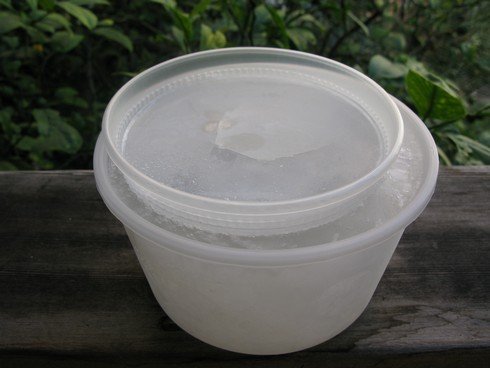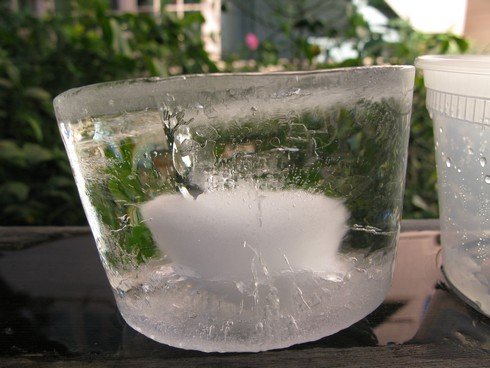This blog post is a continuation of this experiment.
In this experiment, I wanted to test out another way to insulate an ice cube tray to make clear ice. Inspired by a comment from another blog entry by a reader named Gael, I decided to try salt water as an insulator rather than just plain water as in the last experiment. If it worked, this would be a way to make clear ice at home without taking up too much freezer space.
I took a small food container and put it into a slightly larger one. The smaller container held only water. The outer container held water with table salt. The theory is that the salt water would not freeze, so it would act as an insulator for the ice, and control the direction of freezing so that it would only freeze from the top-down (as with the cooler method).
I didn't use a ton of salt. As you can see, the outer container's water did freeze lightly,though it was soft. The bottom did not completely freeze, as you can sort of see here.
The inner container did seem to freeze toward the bottom.
In better-insulated containers, the cloudy part is only on the bottom of the container. Here, it is concentrated but raised slightly above the bottom of the container.
In this case the inner container sat directly on the bottom of the outer container, so it wasn't greatly insulated on the bottom. My theory is that this is why the cloudy part of the ice is raised above the bottom.
To improve this experiment, I would put raise the inner container off the bottom of the outer container, and probably use a greater amount of salt in the salt water.
As the outer container here is only slightly larger than the inner container, this system is more space-efficient than the Igloo cooler for many people without large freezers.
There's more work to do on this…
An index of all of the ice experiments on Alcademics can be found here.



